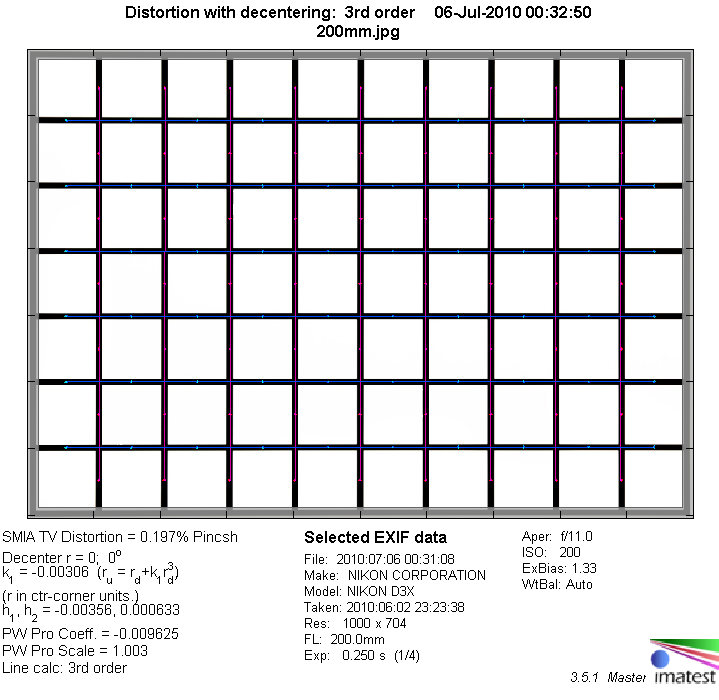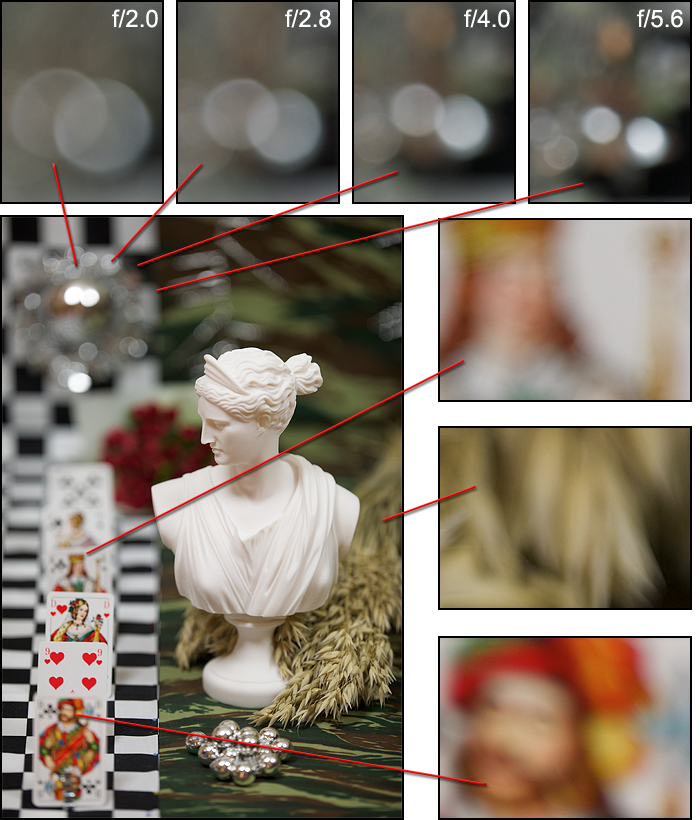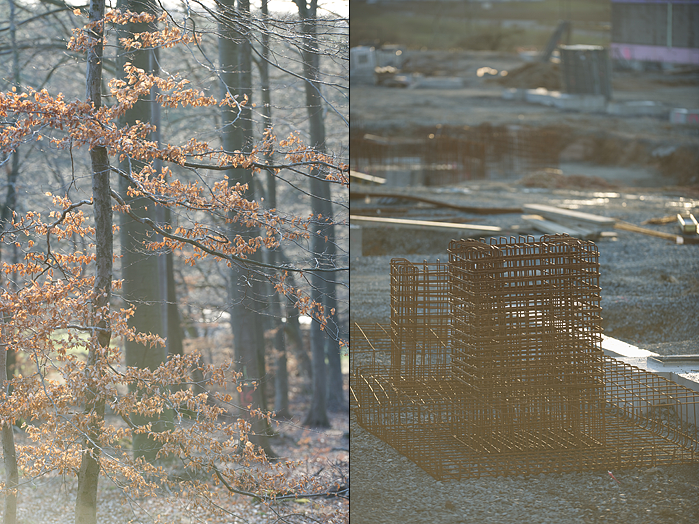|
Page 2 of 2

Distortion
Tele primes usually are not flawed by heavy distortion and the 200 VR is no exception here. Even though there is a very tiny amount of measurable pincushion distortion left when mounted to a DX camera, the lens can be considered distortion-free in the field.

The chart above has a real-world size of about 120x80cm.
Vignetting
The AF-S 200/2.0 VR shows a very moderate amount of vignetting on FX already. Consequently it doesn't come as a surprise that on DX, where the smaller image sensor uses only a smaller amount of the lens' image circle, vignetting is basically no issue at all. A light fall-off of just 0.33 EV at the image borders wide open will be hard to spot in most shots.

MTF (resolution)
From a lens in this class, one expects outstanding sharpness and the lens does not disappoint in this regard. The lens shows excellent sharpness anywhere in the frame and at any aperture (until diffraction kicks in at f/11). In other words: it probably doesn't get much better than this.
It's worth noting that the lens showed a slight amount of focus shift when stopping down (residual spherical aberration).
Please note that the MTF results are not directly comparable across the different systems!
Below is a simplified summary of the formal findings. The chart shows line widths per picture height (LW/PH) which can be taken as a measure for sharpness.
If you want to know more about the MTF50 figures you may check out the corresponding Imatest Explanations

Chromatic Aberrations (CAs)
Chromatic aberrations (color shadows at harsh contrast transitions) are a very well under control and certainly no issue at all.

Bokeh
One of the primary usages of large aperture primes is of course to isolate the main subject from the background with very narrow depth of field. In this case the rendering of out of focus areas is an important aspect.
The 200 VR delivers a very pleasing bokeh with creamy blur, that only in the transition zone shows a tad of nervousness. Background highlights show traces of a cat's eye shape towards the outer edges on DX, but otherwise are perfectly circular, even stopped down, and feature smooth and even distribution without any serious highlighting. The bokeh is not troubled by colour fringing (see below) which adds further to the already outstanding results here.

Bokeh Fringing / Longitudinal Chromatic Aberrations (LoCA)
LoCAs (non-coinciding focal planes of the various colors) are a common issue with relatively fast glass and usually lead to halos on contrasty subjects with different colors - magenta (red + blue) in front of the focus point
and green beyond. Truly "apochromatic" lenses don't show LoCAs but these lenses are very rare. Unlike lateral CAs, LoCAs cannot easily be fixed in post processing.
Well, as you can see below, this is one of the rare lenses. There is a very tiny amount of LoCAs detectable wide open, but in the field this is certainly not an issue.
Also visible here is the slight focus shift when stopping down as mentioned in the MTF section.
Flare/Glare
After all the praise, there is one issue we need to address: glare. The lens does not really like backlight and visibly loses lots of contrast in these conditions. As you can see in the sample pics below, the lens also tends to produce a visible amount of haze opposite to the source of the light in the frame.

Sample Shots
Full size sample images are available in our FX review of this lens.
VerdictFor many, the 200 VR is one of the dream lenses, and in our review it certainly showed why. The lens delivers outstanding sharpness throughout the whole aperture range, is basically free of aberrations and distortions and has extremely pleasing bokeh. It could handle backlight a little better, however the newer version II model of the lens has the potential to handle these conditions better due to Nano Crystal Coat (however, lacking a copy of the newer model we haven't verified this and are only assuming here).
The build quality is excellent, AF is extremely fast and the VR unit works as promised.
Nonetheless, there are drawbacks. It's a massive lens, certainly not the best choice for candid shots, or other kinds of photography where the photographer wants to remain unnoticed. That also means it's heavy. There are owners who claim they can hand-hold this lens for hours, but the author is certainly not one of them. It's a bit front-heavy, too, especially when combined with a rather light-weight DX camera. And last but not least: it's expensive. One could get a nice and complete setup of camera and several lenses instead of this single lens.
Nonetheless, in summary, for anyone able to afford and willing to carry it the verdict can only be: highly recommended!
|